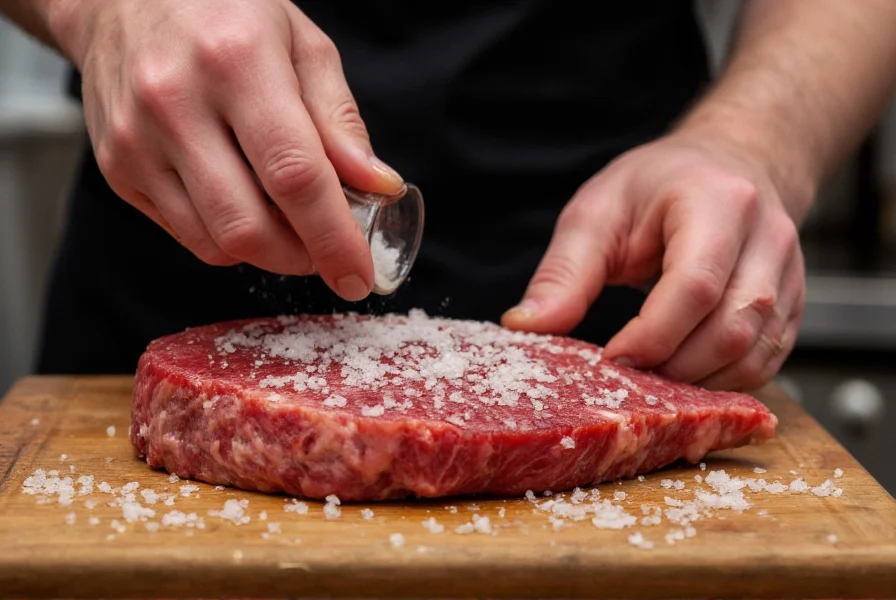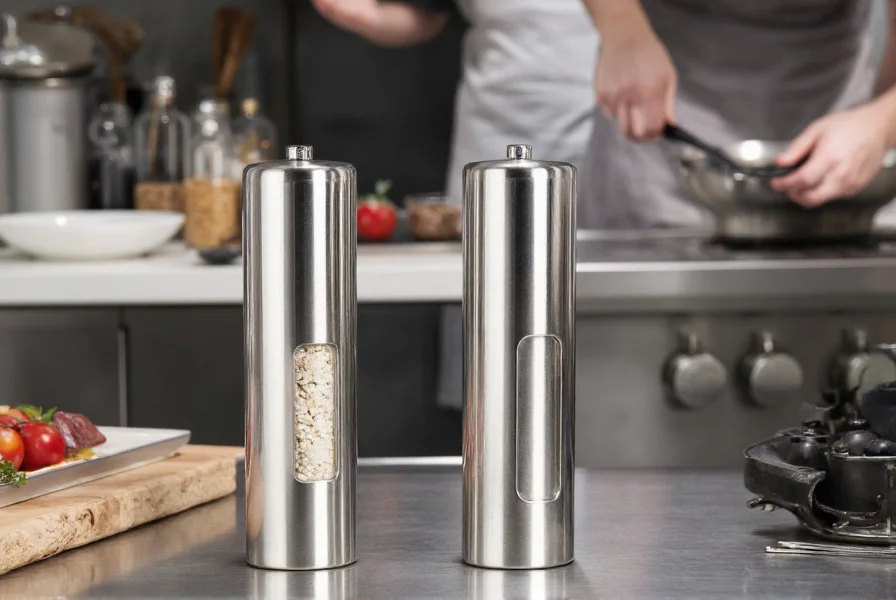Understanding how professional chefs approach these basic seasonings separates amateur cooking from restaurant-quality results. This guide explores the nuanced techniques and considerations that transform simple salt and pepper into powerful culinary tools.
Why Salt Mastery Defines Professional Cooking
Professional chefs treat salt not as a single ingredient but as a spectrum of finishing tools and cooking aids. The difference between table salt and chef-preferred varieties lies in crystal structure, mineral content, and dissolution properties.
Sea salt flakes like Maldon provide textural contrast when finished on dishes, while fine kosher salt penetrates proteins during seasoning. Chefs understand that salt timing affects flavor development—adding salt early in cooking seasons throughout, while finishing salt enhances surface flavor without full absorption.

Pepper: Beyond the Basic Grinder
Professional chefs rarely use pre-ground pepper. Whole peppercorns maintain volatile oils that create complex flavor profiles when freshly ground. The best pepper grinding techniques for chefs involve:
- Adjusting grinder settings based on dish requirements (fine for sauces, coarse for steaks)
- Understanding how heat affects pepper's chemical compounds
- Using different pepper varieties for specific applications
Black Tellicherry peppercorns offer bold flavor for hearty dishes, while white pepper provides subtle heat in light-colored sauces where black specks would be undesirable. Chefs know that pepper application timing matters—adding early creates integrated warmth, while finishing preserves volatile aromatic compounds.
Professional Salt and Pepper Seasoning Guide
Mastering salt and pepper seasoning ratios requires understanding three critical factors:
| Factor | Professional Approach | Home Cooking Tip |
|---|---|---|
| Taste Sensitivity | Season in layers throughout cooking | Add 25% less than you think, then adjust |
| Ingredient Interaction | Account for natural sodium in ingredients | Reduce added salt with salty ingredients |
| Temperature Effect | Final seasoning after temperature stabilization | Season hot dishes, not cold ingredients |
Professional kitchens follow the principle of seasoning to taste, not by measurement. This requires developing palate sensitivity through practice. The proper technique for tasting seasoning involves small, deliberate samples at multiple cooking stages.
Essential Tools for Restaurant-Quality Seasoning
While professional kitchens use simple tools, their quality makes a difference. Chefs prefer:
- Salt cellars over shakers for controlled application
- Three-piece pepper mills with adjustable grind mechanisms
- Magnetic salt containers mounted near cooking stations
The best salt containers for chefs allow pinch seasoning—using three fingers to control exact amounts. This technique provides more precision than shakers while maintaining speed during service.

Common Seasoning Mistakes Home Cooks Make
Understanding common salt and pepper mistakes in home cooking helps bridge the gap to professional results:
- Single seasoning point - Adding all salt at the end rather than throughout cooking
- Ignoring ingredient sodium - Not accounting for natural salt in ingredients like cheese or soy sauce
- Over-reliance on pre-ground pepper - Using stale, flavorless pepper from old grinders
- Inconsistent application - Shaking rather than pinching salt for even distribution
Developing professional seasoning techniques at home starts with tasting at multiple cooking stages and adjusting incrementally. Chefs often say, \"If you can taste the salt, you've added too much,\" emphasizing balanced integration rather than overt salinity.
Developing Your Seasoning Palate
Becoming proficient in salt and pepper skills for home chefs requires deliberate practice:
- Prepare identical dishes with varying salt levels to train your palate
- Experiment with different salt types on the same ingredient
- Grind pepper directly onto tasting spoons to experience freshness differences
Professional development continues throughout a chef's career. The importance of salt and pepper in culinary training cannot be overstated—they form the foundation of flavor development that all other techniques build upon.
Frequently Asked Questions
What type of salt do professional chefs prefer for everyday cooking?
Most professional chefs use Diamond Crystal kosher salt for everyday cooking and seasoning. Its hollow crystals provide excellent grip for pinch seasoning, dissolve predictably, and contain no anti-caking agents. The larger crystal size also makes over-salting less likely compared to fine table salt.
How can I tell if I've properly seasoned a dish like a chef?
Professional chefs assess seasoning through multiple tasting points during cooking. A properly seasoned dish shouldn't have a distinct 'salty' or 'peppery' taste, but rather enhanced natural flavors. The best test is to taste before final plating—seasoning should make ingredients taste more like themselves, not introduce a separate salty or spicy element.
Why do chefs add salt at different stages of cooking?
Adding salt at different cooking stages creates layered seasoning. Early addition seasons throughout the ingredient and affects texture development (like drawing moisture from vegetables). Mid-cooking salt integrates with developing flavors. Finishing salt provides surface seasoning without full absorption. This technique creates more complex flavor profiles than adding all salt at once.
What's the difference between how chefs use black pepper versus white pepper?
Chefs choose between black and white pepper based on both flavor and visual considerations. Black pepper has more complex, floral notes while white pepper offers cleaner heat. White pepper is preferred in light-colored dishes like béchamel or potato salad where black specks would be visually disruptive. The choice depends on whether visual presentation or flavor complexity takes priority for the specific dish.
How should I store salt and pepper to maintain quality like professional kitchens?
Professional kitchens store salt in airtight containers away from humidity, as moisture causes clumping. Whole peppercorns maintain freshness for months when stored in opaque, airtight containers away from heat and light. Ground pepper loses volatile compounds quickly—chefs grind only what they'll use within a few days. For home use, buy whole peppercorns and grind as needed, storing both in cool, dark places.










 浙公网安备
33010002000092号
浙公网安备
33010002000092号 浙B2-20120091-4
浙B2-20120091-4